There’s a reason pumpkin is a popular flavor this time of year. It’s versatile, packed with vitamins, and great with the right spices. Did you know pumpkin can even be used as a substitute for eggs or butter?
To help you get your pumpkin fix this fall, we’ve listed some of our favorite pumpkin recipes from our Safe Eats® Allergy-Friendly Recipe Collection. All of the recipes below can be made without egg, fish, gluten, peanut, sesame, shellfish, soy, tree nuts, and wheat.
Allergy-Friendly Pumpkin Recipes
Pumpkin Pancakes – Start your day with a pumpkin variation on a breakfast favorite, pancakes. For an extra treat, mix chocolate chips into the batter and add Aquafaba Whipped Topping.
Roasted Pumpkin Risotto – We often think of pumpkin in desserts. But it can be great in savory dishes too. This creamy rice topped with roasted pumpkin can serve as a side or as a main dish.
Pumpkin Pudding – If you want an alternative to pumpkin pie, look no further than this delicious pumpkin pudding. You can use canned or fresh pumpkin. Top with Aquafaba Whipped Topping if you’d like.
Cheryl's Pumpkin Cake or Muffins – This recipe is not only delicious, but it gives you options too. Use it to make muffins, cake, or a quick bread. You can even make doughnuts with this recipe by baking it in a doughnut pan.
Make things extra special by:
- Adding mini chocolate chips
- Topping with Milk-Free Cream Cheese Frosting
- Drizzling with glaze flavored with vanilla or cinnamon
Cheryl's Pumpkin Cake or Muffins
Pumpkin Turkey Chili – Pumpkin in chili? Yes! Try this recipe for a warm, hearty twist on a traditional favorite.
Kitchen Safety: Preventing Cross-Contact with Food Allergens
Cross-contact occurs when a food allergen comes in contact with food or an item not intended to contain that allergen.
Sometimes cross-contact can occur when you are preparing food in your home. There are several steps you can take to help prevent food mix-ups and accidental cross-contact.
Label Foods in Your Home as “Safe” or “Not Safe”
Clearly label the food in your pantry, refrigerator, and freezer based on if it has your child’s food allergens. One way to do this is to use red and green stickers. The red stickers are for the foods your child cannot eat. Green stickers are for the foods they can eat. If anyone in your home is color blind, include text on the stickers. Apply these stickers to every food item in your house.
Avoid Pantry Mix-Ups
If you have both “safe” and “unsafe” versions of similar items (like soy milk and cow’s milk) in your home, do not store these products next to each other. Put “safe” foods on separate shelves or cabinets. Consider storing one of the items in a special container.
Prevent Cross-Contact While Preparing Food
If you keep both “safe” and “unsafe” foods in your house, take steps prevent cross-contact:
- Teach everyone to wash their hands with soap and water before touching safe foods.
- Do not use the same utensils to prepare food for your child or allow allergen-covered utensils to touch your “safe” foods. For example, if a knife used on butter gets used in a jar of jam, the jam now has milk proteins from the butter in it.
- Teach everyone to clean all surfaces before and after preparing food.
- If you are preparing both “safe” and “unsafe” food for the same meal, prepare the safe meal first.
- Place utensils, plates, and cutting boards directly into the sink or the dishwasher after use.
- If you use a grill or griddle, be sure to fully clean them before cooking for your child or cook your child’s food in foil or a clean pan.
Tips for Cooking and Baking with Pumpkin
You can use pumpkin for more than just favorite fall recipes. You can also use canned pumpkin or pumpkin puree as a substitute for egg, butter, or oil in recipes.
- Use ¼ cup of pumpkin for one egg.
- Use 1 tablespoon of pumpkin for 1 tablespoon of butter, margarine, or oil.
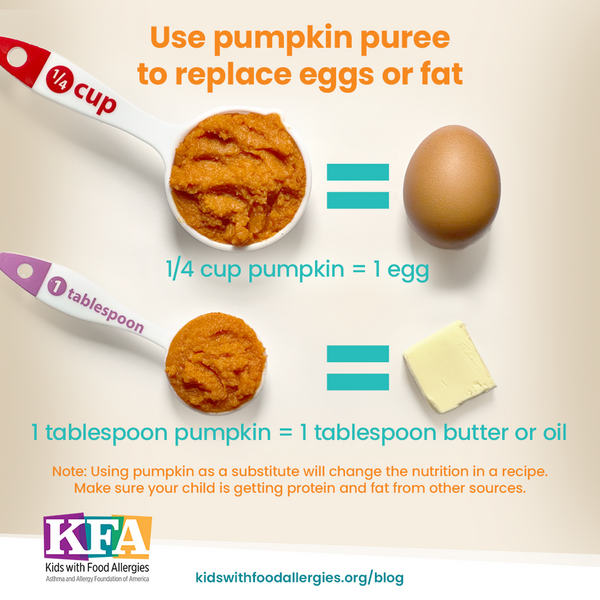
Be sure to use canned pumpkin and not pumpkin pie filling, which will include spices.
Remember that using pumpkin as a substitute for egg or fat in a recipe will change the nutrition of the dish. When you use pumpkin as a replacement in recipes, make sure your child is getting their protein and fat from other places to help them have a well-balanced diet.
Many recipes don’t call for a full can of pumpkin. Freeze leftover pumpkin puree in ice cube trays to use later. You can toss cubes in smoothies, thaw them to use in recipes, or use them as a fat or egg substitute.
Looking for more recipes? Check out other pumpkin recipes in KFA's Safe Eats® Allergy-Friendly Recipe Collection.

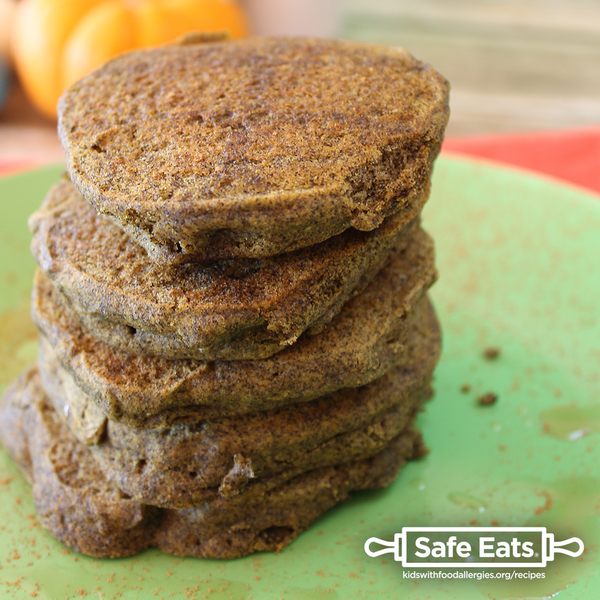

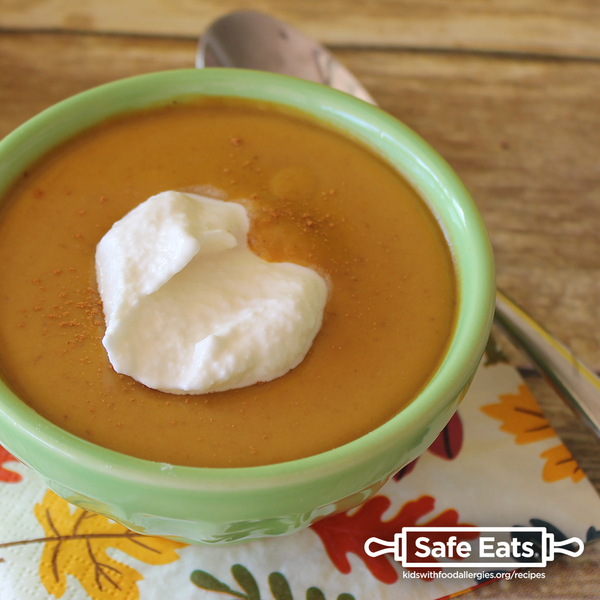
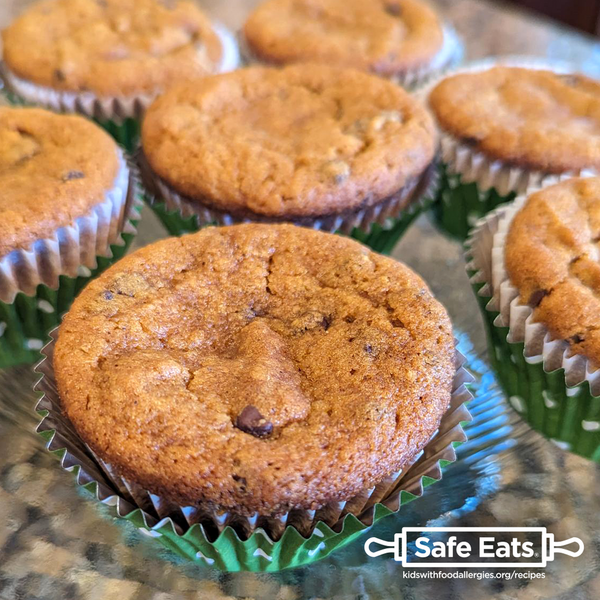




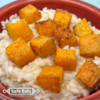


Comments (0)